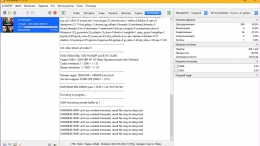
#Xvid4psp nvenc software#
Freeware Trialware = Download Free software but some parts are trial/shareware. RECENTLY UPDATED = The software has been updated the last 31 days. NO LONGER DEVELOPED = The software hasn't been updated in over 5 years. Type and download NO MORE UPDATES? = The software hasn't been updated in over 2 years.
#Xvid4psp nvenc update#
Version number / Beta version number / Update version number and when it whas released. So the investment is worth it.Explanation: NEW SOFTWARE= New tool since your last visit NEW VERSION= New version since your last visit NEW REVIEW= New review since your last visit NEW VERSION= New version Latest version But at least I'm guilt-free with respect to this.Įdit: I forgot I use the paid feature - Colospace Transform, extensively, which has proved to be a life-saver compared to tweaking and pushing the dials extremely. I use just one paid feature even after more than a half-year of purchasing, which is the Dehaze feature and which can be also worked on by careful tweaking of curves. Even as a casual home user I felt a bit of guilt about sticking to only the free version due to this.
#Xvid4psp nvenc license#
The real benefit of Studio license is the FX not available in Free version, besides paying for the effort of improving and maintaining such complex software. The with and without GPU-Decode benchmark - I found useful for a reason - The Internet is littered with claims that buying Studio version will automagically solve all performance problems whenever somebody complains about slow rendering - obviously that's not true. Right - I had the APUs in my head since I previously ran that - only APUs have the decode support. h.264 is easy, try h.265 and fusion without GPU HW decode This is one of the gripes I have with Puget benchmark. GPU decoding is helpful in cases where the CPU decoding takes most of CPU time, preventing it too do other CPU-only tasks, like in Fusion tab. Yes, I suspect in case of GPU decode and effects/VFX, the GPU needs to transfer decoded data to the main memory for editing and effects/VFX operations, while if it's decoded by the CPU it goes directly to the main memory. Only Intel CPUs have h.264 decode, but it is not in effect if you disabled GPU HW decode in Resolve. So many "ases", don't know how I managed that Also note that actual playback in performance mode (default) can be as much as twice as fast as the final render. manually load each benchmark into resolve and render out, at the end of which you get the info about how many seconds it took to render. Obviously you didn't do what I proposed i.e. Why is it higher without GPU decode support? Does it free up GPU to work faster in FX and Fusion? Most CPUs have H.264 decode support anyways so the performance hit is not that great. I just retried the same benchmark without GPU decode support (unchecked) in preferences and the scores are a little higher for Fusion and VFX :

That requires using a stopwatch because the final results do not list time taken per test. Perhaps has also something to do with VRAM allocated to the encoder (512 vs 1024). I seems 7th gen NVENC is twice as fast as 5th gen. Mario Kalogjera wrote:You take the length of the timeline in frames and subdivide with render time in seconds to get fractional fps that you can more precisely compare to Puget's.


 0 kommentar(er)
0 kommentar(er)
